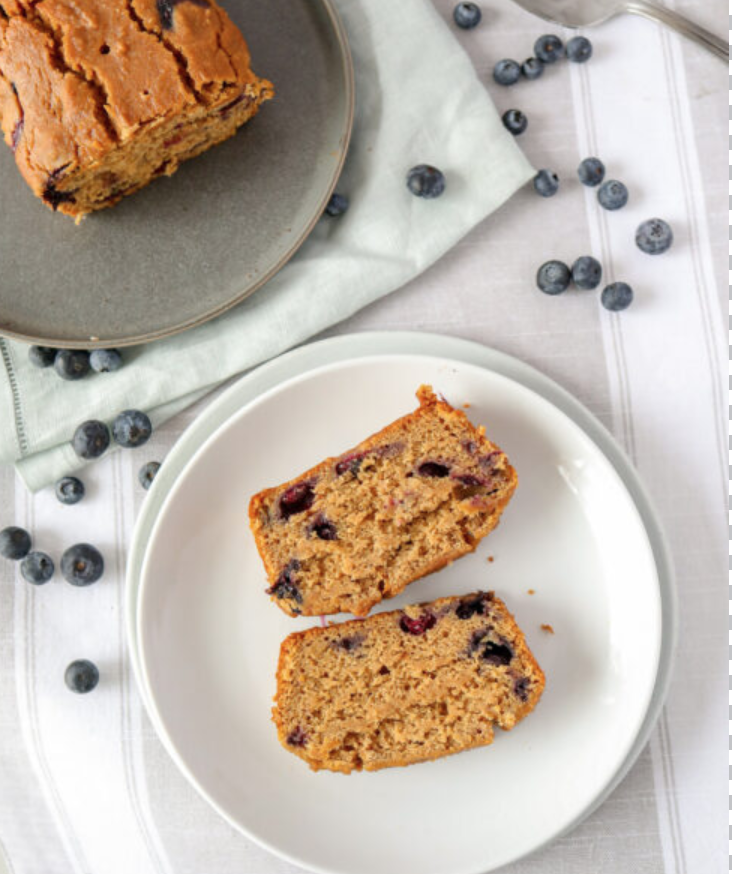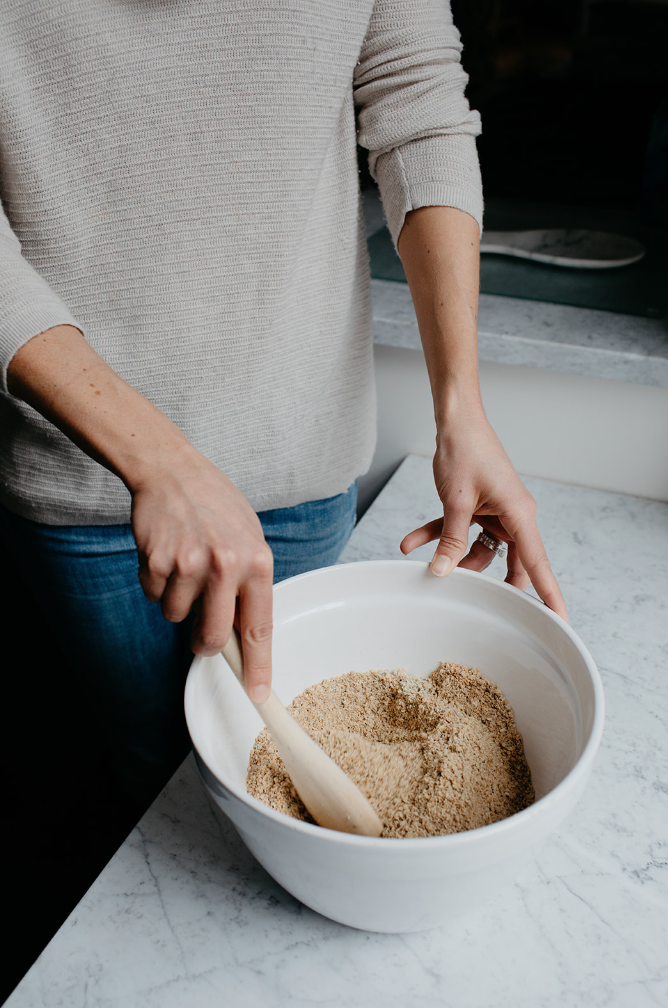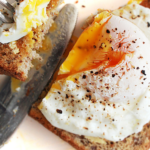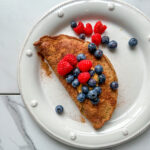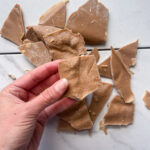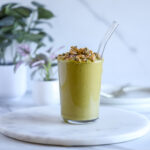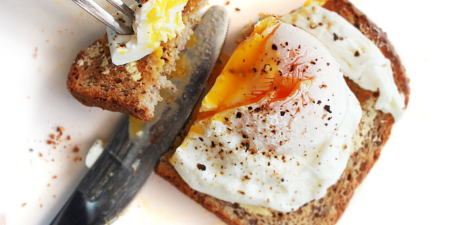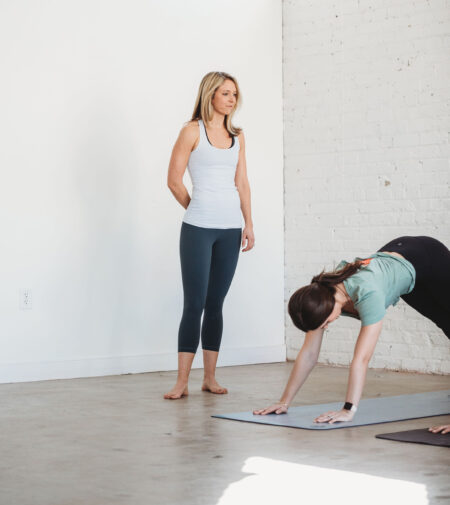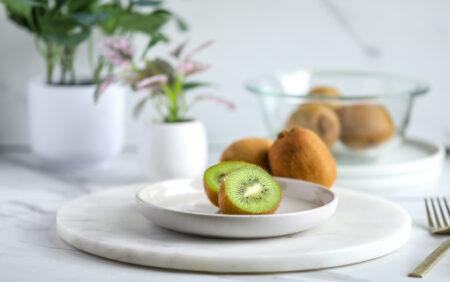Some of my earliest memories are of assisting my mom in the kitchen, wearing an over-sized apron, cracking eggs and baking cookies. I continued to bake throughout my teens and twenties, using traditional flours and white sugar. It’s what I knew, and gluten-free or food sensitivities had yet to sweep the food scene.
In my mid-twenties, as I started to study nutrition and experiment with cutting dairy and gluten from my diet (in an attempt to achieve clear skin), I noticed a huge improvement, not only in my skin, but how I felt. My digestion improved and my mood and blood sugar stabilized. Still possessing a love for baking (and baked goods!), I learned how to upgrade those ingredients to those more suitable for my health. I swapped the whole wheat flour for Almond, coconut, brown rice, and quinoa. Milk and cream were replaced by coconut and almond milks. I even played around with completely plant-based baking when I learned chia seeds and ground flax could be used as egg replacements.
Then in 2018, I got a cookbook deal for a Gluten-Free Vegan Baking Concept. Although I don’t have any professional experience, I took on the project as a fun challenge. I interviewed professional bakers, researched online, read other recipe for inspiration. I spent four months elbow-deep in applesauce, learning all I could about this style of baking.

Here is everything I learned:
Allow the batter to rest.
One of the major differences in gluten-free baking is the texture. Gluten is a very sticky protein that provides strength and elasticity. Without it, there is a lack of the binding aspect that you might normally find working with conventional baked goods, especially breads. After incorporating any wet ingredients into a flour mixture, you will notice that the dough might not have that “pull” to it. In fact, it feels a bit more “fluffy.” After beating the ingredients into a batter, allow it to sit for 20-30 minutes before transferring it to the muffin tin or bread pan (or whatever cooking vessel you are using). This gives it time to absorb the moisture and organically get more sticky. I highlight the difference here.
Use a plant-based binding agent.
In plant-based baking, you have to make up for the absence of eggs. Flax eggs, chia eggs, and fruit and vegetable purees not only replace the moisture that eggs provide, but can act as binders as well. Refrigerating the dough before baking is also an option. This allows the fatty ingredients ( coconut oil, vegan butter, and nut and seed butters) to solidify (as they do when cold) and hold everything together.
Plant-based sources of fat help to recreate the creaminess.
Egg yolks and butter in traditional baking lend a certain creaminess and texture to the finished product. Again, plant-based sources of fat (nut and seed butter, full-fat coconut milk) can help you achieve a similar result.
Use acid and be accepting of a different shape (without sacrificing taste!).
Eggs are primarily the ingredient responsible for the “rise” in traditional baked goods. If you are choosing to bake without them, know that your bread, cake, or cookies will be flatter than normal. There is a trick: by whisking together a plant-based milk with an acid (i.e. apple cider or white vinegar), this creates a vegan “buttermilk” effect that interacts with the leavening agent (baking soda or baking powder) to encourage more rise. The resulting shape might not turn out exactly like a traditional muffin, bread, cake, or cookie, but the taste will still be delicious!
